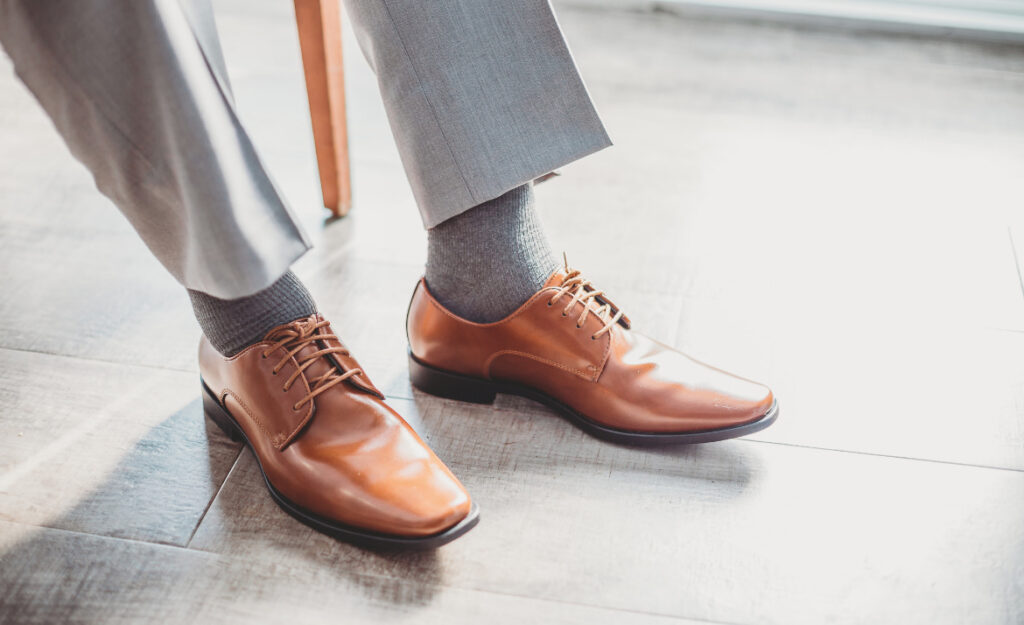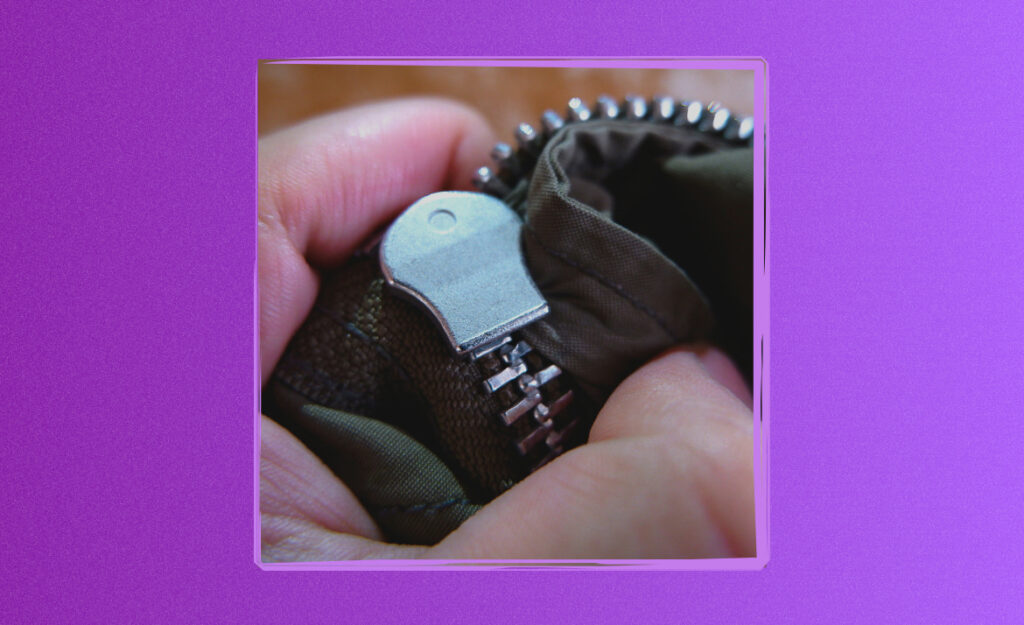
Everyone’s experienced that awkward moment when their shoes announce every step. Instead of letting that high-pitched squeak turn heads, you can take control and fix squeaky shoes in a few practical ways.
Ignoring a shoe that squeaks won’t help it fade into the background. That persistent noise sticks out in quiet halls, busy offices, and even at home, making your every move unexpectedly loud—and memorable for all the wrong reasons.
If you’re ready to avoid the unwanted spotlight, keep reading. You’ll pick up targeted strategies, hands-on tips, and proven fixes to resolve squeaky shoes before they catch you off guard.

Untangle Cords Hack You’ll Wish You Knew Sooner
Say goodbye to messy wires using these simple tricks you can use at home, in the office, or while traveling.Pinpoint the Squeak: Finding Where and Why It Happens
Learning to fix squeaky shoes begins by identifying the precise cause. You can’t quiet a noise until you know which part of your shoe makes it—and why it started in the first place.
Sometimes, the noise comes from a loose insole, trapped moisture, or worn stitching. Tracking the source takes a minute, but it reveals exactly what you need to do next.
Press, Flex, and Listen: Home Diagnosis Techniques
Take off your shoes. Slowly flex the sole and listen closely. Press against the heel and toe, then bend the shoe side to side. Notice where the squeak originates—near the arch, the heel, or the toe box?
Flip your shoe over and examine the sole. Look for places where two materials rub, a gap appears, or the outsole has come loose. Spotting a frayed edge may point to internal friction or a moisture pocket.
Check inside, beneath the insole, for any sand, grit, or uneven stitching. When you discover the exact problem spot, you’ll know where your repair efforts will count most.
What Types of Shoes Are Most Prone to Noise?
Thin-soled dress shoes, athletic sneakers, or cheap flats seem noisier due to their materials and build. Synthetic soles or soft rubber can become louder when damp or after repeated use, compared to thick leather or rugged work boots.
Notice that new shoes with glossy finishes or deep tread are particularly susceptible after their first few uses. Brands aren’t as important as factors like adhesive quality and insole security.
Examining your shoe’s construction and context will help you determine whether routine wear or specific circumstances are to blame, allowing you to fix squeaky shoes with a targeted strategy.
| Shoe Type | Common Cause of Squeak | Best Quick Fix | When to Try It |
|---|---|---|---|
| Athletic Sneakers | Loose insoles or damp soles | Shoe powder under insole | Immediately after hearing squeak or after washing |
| Leather Dress Shoes | Dry, rubbing outsoles | Conditioner on sole edges | After walking on dry floors or carpets |
| Flats & Loafers | Insole movement | Spray adhesive or talcum powder | When new or after heavy flexing |
| Rubber Boots | Moisture or grit trapped | Remove liner, dry thoroughly | After heavy rain or muddy use |
| Sandals & Slides | Strap friction | Lubricate strap joints | When dry or after cleaning |
Simple Fixes: Actions for Quick, Reliable Results
These proven techniques let you fix squeaky shoes using household items. They’re straightforward to apply and don’t require any specialized tools—just a little patience and some common sense goes a long way.
Address the squeak as soon as you hear it. The sooner you intervene, the easier it is to prevent extra wear or damage that would require more advanced repairs down the road.
Speedy Solutions with Common Items
Having shoe powder, baby powder, or even ordinary cornstarch on hand helps in a pinch. Sprinkle it under loose insoles or directly on the spot where fabrics or materials rub together.
- Apply shoe powder beneath insoles to prevent internal friction, especially after shoes get wet and dry out, which can cause materials to shift.
- Wipe shoe bottoms with a lightly damp cloth and let them air dry flat—this eliminates minor surface sounds caused by grit stuck in treads.
- Rub a stick of clear bar soap along leather or synthetic sole seams. This helps lubricate the contact point and may instantly silence small squeaks.
- If shoelaces creak against eyelets, rub them with a dab of hand lotion. This adds a thin barrier and keeps fibers sliding smoothly.
- Slip a dryer sheet into each shoe overnight to fight both noise and odor, especially in synthetic or rubber shoes after exercise or rain.
Test your fix after a few minutes of walking. If the issue isn’t resolved, repeat or layer different methods, focusing on the identified problem area.
Insider Tips for Persistent Squeaks
A little spray adhesive can anchor a slipping insole. Spray a light coat on the bottom of the insole and press it firmly back in place, holding for 60 seconds.
- Spray adhesive only on dry, clean insoles and use minimally to avoid sticky build-up.
- Lay a thin felt pad between the insole and the shoe base to add cushion and absorb excess moisture—a key step for shoes used every day.
- Pinch heel counter slightly and drop a few grains of talcum powder in, moving the shoe to help distribute powder into tight areas causing noise.
- Condition leather parts regularly to prevent drying or cracking that contributes to friction sounds in smarter, older shoes.
- Keep shoes stuffed with newspaper while drying to absorb moisture, reducing internal creaks that emerge after exposure to rain or sweat.
If none of these methods work and the squeak returns after several wears, consider more permanent repairs or professional intervention.
Treating Moisture and Humidity: Prevent Recurring Squeaks
Moisture trapped inside or between shoe layers consistently triggers squeaks. Prevent them by keeping shoes clean and thoroughly dry, especially after prolonged wear or accidental puddle encounters.
Letting damp shoes dry naturally, away from direct heat, preserves material integrity and helps you fix squeaky shoes before lasting sounds set in.
Managing Wet Conditions After Outdoor Use
Remove insoles and laces after shoes get wet. Set them in a ventilated room, avoiding heaters or radiators that can warp glue and dry leather too rapidly.
Wipe exterior surfaces before drying, especially the seams where water often collects. Loosen tightly tied knots to give every component space to air out and prevent future sound issues.
Stuff shoes with newspaper or paper towels to draw out interior moisture. Replace the stuffing every few hours until shoes feel completely dry, then check for squeaks before wearing again.
Dehumidifying Storage for Squeak-Free Shoes
Consider storing shoes with silica gel packs—those little packets found in new shoe boxes. They absorb ambient moisture, especially during humid seasons or if you keep shoes in a basement or garage.
Rotate your shoes, giving each pair a full day’s rest between wears. This helps moisture fully escape and maintains both comfort and silence going forward.
Place a small bowl of baking soda in closets or storage bins to discourage humidity build-up, safeguarding your attempts to fix squeaky shoes over time.
Upgrading Care: Consistent Habits That Prevent Noise
Building a routine for your shoes minimizes squeaks and extends their lifespan. By investing a few minutes each week in care, you save yourself embarrassment—and money—by preventing repairs later on.
Following a checklist ensures nothing gets overlooked. Add shoe care steps to your weekly cleaning routine for best results.
Weekly Shoe Care Checklist
– Brush out debris from the footbed and treads to minimize friction.
– Inspect all seams and edges for signs of separation or wear.
– Rotate shoe pairs to allow ample drying time between wears and discourage hidden moisture buildup.
– Apply leather conditioner or protective sprays for your shoe type as appropriate, focusing on dry or high-wear portions.
– Tighten any loose screws, fasteners, or decorative pieces that might shift and squeak over time.
Mindful Storage—A Silent Step Forward
Store shoes upright or on racks to preserve their shape and allow airflow to reach all surfaces. Avoid stacking shoes or trapping them in plastic, where condensation collects.
Choose shoe bags made from fabric, instead of plastic, which allows humidity to escape and decreases the chance that you’ll need to fix squeaky shoes in the future.
Keep shoes away from hot water heaters, vents, or windowsills, which cause uneven drying and contribute to both creaks and cracks.
Troubleshooting Persistent Problems: When the Squeak Won’t Quit
If standard fixes don’t work, persistent squeaks call for a deeper investigation. Certain noises signal more significant issues that, if left unchecked, could shorten your shoe’s lifespan or compromise comfort.
Squeaks that start suddenly after vigorous activity—or worsen after a minor fix—signal misaligned parts or damage inside the sole. Take quick action to address these issues.
Pushing Beyond Surface Fixes
Lift the insole and look for signs of glue failure, separated seams, or even broken support shanks. Slightly press along the sole and look for unexpected softness or movement.
Crumbling adhesive, visible gaps, or a clicking noise that accompanies a squeak means professional repair is likely your best bet.
If in doubt, bring the shoe to a local cobbler. A professional can reseal, patch, or rebuild shoe components, ensuring a longer life and a quick silent step.
Realistic Scenarios Demanding Repairs
After hiking or vigorous walks, persistent squeaking may accompany aches or extra movement in the sole, especially if humidity or water exposure was high. Addressing the root materials is essential.
If you use a shoe heavily for specialized work, don’t delay a repair once you notice a pattern emerging. “This shoe keeps squeaking and now feels loose at the heel—I need to get it fixed.”
Applying direct fixes like powder or adhesives will only help temporarily. For best results, reinforce internal seams, replace compromised layers, or use a pro-grade sole reattachment.
Choosing Products That Silence: Tools and Materials That Work
Specific tools and products speed up the process to fix squeaky shoes. Knowing what’s available lets you stock up and handle enemies of silence as soon as they arise.
Everyday grocery or convenience stores often carry simple essentials that get even stubborn shoes back to silence.
Best Products for Silent Shoes
Shoe-specific powders outlast talcum or cornstarch and guard against future noise. Self-adhesive insoles fit snugly, preventing interior sliding during a busy day.
Leather conditioners—often beeswax-based—nourish and protect outsoles, reinforcing natural elasticity. Silicone or graphite greases serve specialized roles for fixing friction in synthetic shoe components and hard-to-reach seams.
Repurpose non-shoe items as a quick fix: a dryer sheet calms mild static squeaks, and a piece of felt works well tucked beneath stubborn insole creases.
Maintaining Silence: New Habits for Long-Term Comfort
Making silence part of your routine transforms your shoe experience. Regular inspection—just a minute every week—can catch noisy problems before they start.
The analogy is simple: tuning your shoes is like tuning a guitar. Small adjustments prevent big mishaps and keep you from standing out for the wrong reason.
Store shoes in a dry setting, let them air, and act quickly if a squeak returns. Routine care and immediate attention are your best peaceful path forward.
Frequently Asked Questions
Why do new shoes squeak even before first wear?
New shoes sometimes squeak because manufacturing adhesives haven’t fully set or materials still retain moisture from the production process. Give new shoes a few days to air out, then try the powder or insole tricks discussed above.
Are loud shoes a sign that they’re about to break?
Noisy shoes can signal internal friction or loose components, but they don’t always mean imminent failure. However, it’s wise to check for damage as soon as you notice a recurring squeak to catch any developing problem early.
Can I permanently fix squeaky shoes at home?
Many squeaks disappear with at-home solutions like powders, spray adhesive, or regular maintenance. Persistent or returning squeaks may indicate a more complex issue best solved by a repair professional or cobbler.
Should I avoid wearing certain shoes in rainy weather?
Some shoes, especially those made from thin synthetics or unprotected leather, squeak more when wet. For those shoes, save them for dry conditions whenever possible, or use protective products and dry them thoroughly if they do get wet.
Do certain floor types make shoe squeaks worse?
Yes, polished tile, gym floors, and highly lacquered wood surfaces amplify shoe squeaks, especially with flat or rubber soles. To reduce unwanted sound, choose shoes with well-conditioned soles or textured treads if you expect to walk on noisy surfaces.



